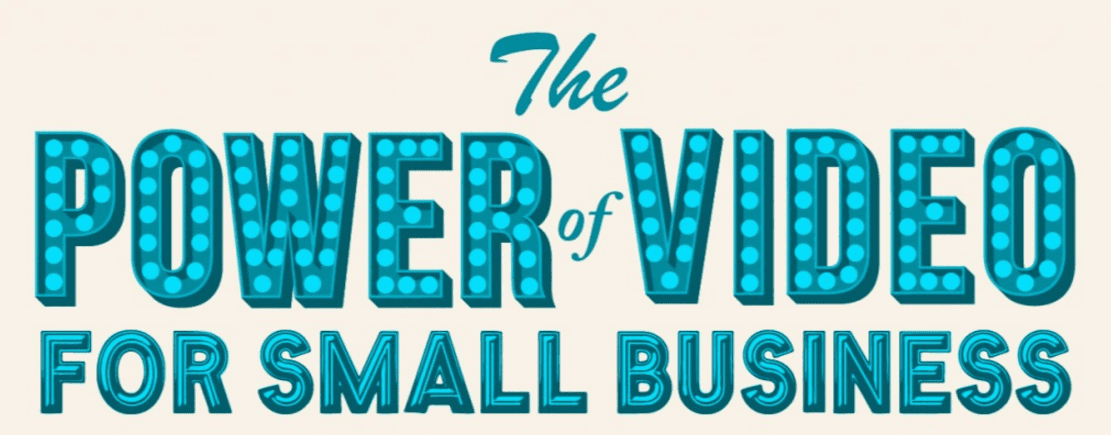Live chat, video and product finders can help you massively boost your conversion rate
If you suddenly discovered you had superpowers, you’d use them, right? Of course you would! (and hopefully in a socially beneficial way). Well, I recently discovered a few user experience (UX) techniques that are proven to significantly lift E-commerce revenues, so I wanted to share these techniques so that you can starting use them yourself soon.
First I’ll describe the revenue ‘leverage factors’ each of these features provide. Then I’ll provide guidance on how to design and implement them for your eCommerce website.
The X factors, please
My recent analysis for a website that sells surveillance products found that the Revenue Per Visitor (RPV) - the top conversion metric for E-commerce websites - was amplified by the following factors:
- By 3.9X when visitors used chat
- By 1.7X when visitors viewed videos
- By 2.2X when visitors used a product finder
In other words, visitors who used online chat produced nearly 4 times as much revenue as visitors who didn’t use chat. These values are even more impressive when they’re expressed as percentage: the 3.9X for chat equates to a 290% increase in revenues for visitors who used this feature. This obviously adds up to big revenue gains when it’s multiplied by a large number of visitors per month.
My team arrived at these factors by:
- Installing the script for Evergage, a website personalization platform, on our client’s eCommerce website
- Tagging all key website interactions
- Creating segments of visitors (based on specific interactions)
- Running reports to see the before/after effect of the UX updates
- Taking the ratio of the RPV of visitors who used the feature to the RPV of visitors who were exposed to the feature, but didn’t use it
It’s a simple process - it just takes a few hours and a modest investment in a personalization tool. (I won’t get into the tool specifics or costs here - just know that the monthly tool cost pales in comparison to the insights and revenue lifts you get from creating custom visitor segments and viewing the available reports).
True, these ‘boost factors’ may vary across businesses. But considering that the above X factors are for discretionary products, not products that people need to buy every week or month, these factors are likely to be even higher for mass-market eCommerce sites.
Chat
It makes sense that chat would increase conversions because it’s a human interaction that requires little effort or motivation. Most people, especially those under 30, don’t want to actually talk to anyone while shopping; they’d much rather text, email or chat. So your website’s salespeople need to be where they are - online, knowledgeable, and eager to answer their questions.
If you don’t have chat on your site yet, you can get started by:
- Researching and choosing a suitable chat tool
- Training your chat (and phone) staff on customer service and sales best practices
- Hooking your chat tool up to your Customer Relationship Management (CRM) system, so your reps can do things like collect emails for follow-on marketing
- Deploying the chat experience on your website
- Improving both your chat tool and sales interactions over time
Since chat interactions provide the highest RPV boost, even if your chat experience isn’t awesome when first launched, you’re still likely to get a 1.5-2.0 X RPV boost. That’s nothing for you - or your CFO - to sneeze at.
Something else to keep in mind: You will also be gathering deep streams of prospect data from your chat logs. By mining these logs, either manually or with a text-mining tool, you’ll collect insights that will allow you to improve both your chat experience and other aspects of your conversion funnel.
Video
I learned the other day that the average session time on YouTube is 40 minutes per viewing session. No, not 40 seconds, or 4 minutes, but over half an hour. YouTube does this cleverly by auto-rolling playlists, showing related videos, personalizing the homepage, and other tactics. You end up saying, ‘Geez, where did the time go, I was just looking for how to jump-start my car. Now I’ve been watching Sean Spicer news conference videos for over an hour!’ We humans obviously love to watch videos and, with the high popularity of TV shows and movie streaming, I don’t expect this to change anytime soon.

So, how do you tap into this fascination, so that it lifts your conversions? First, you should script and produce some ‘explainer’ scripts for all of your site’s main usage scenarios and categories - content that explains key product features to consider, and the pros and cons of each. Don’t just blurt out features and specs; that will make your visitors’ eyes glaze over. Instead, assume that most of your visitors don’t know much about your company or your products, and don’t have the patience to be lectured. Assume that what they really want and need is guidance - ultimately reassurance - that they’re making a smart, well-informed choice.
After informing your visitors, you can then go into ‘demo mode’ - show videos of the product in use in real-life scenarios. These videos will make it real, and help your viewers visualize themselves using the product. If they’re using it in their minds, they’re well on their way to actually buying it. They just may need to get a quick question answered. Assuming that you’ve implemented chat (you will be, right?), those visitor interactions will ‘have your back’ in those situations.
Once your videos are done, post them to YouTube, social media, category pages, product pages. Get them out there so they can start driving engagement and getting your visitors to take that next conversion click.
Finders keepers
If you’re not familiar with product finders, here’s the best analogy: they are the UX equivalent of the real-life salesperson who greets you, asks you a few questions, then guides you to the best product for your situation. If this salesperson is good, she doesn’t just guide you to a single product, but to a complete solution. If she is bad - or doesn’t even connect with you - you just wander away and look elsewhere.
To find the questions - and answer choices - to put into your finder, ask a few experienced support reps the ‘qualifying questions’ they ask to guide prospects to the best product in the shortest amount of time. Then, after providing the right motivation for your call-to-action button (e.g. ‘Get your customized hidden camera! [subtext: ‘It only takes 30 seconds’), jump right into your questions. I’ve found that Lightbox layers are the best way to show the questions to desktop visitors. For mobile visitors, I’ve learned it’s best to show the questions directly on the page.
Keep in mind these guidelines are you create your questions:
- Don’t ask more than 5-6 questions (4 is preferable)
- Don’t offer more than 3 answer choices per question
- Include tips below the answers that clarify the implications each answer (if necessary)
And when you show your recommendations:
- Reiterate the answers the visitor provided
- Present a higher-price ‘premium’ option to the left of a ‘standard’ one (based on the anchoring principle, the standard one will seem like a good value)
- Provide a way for the visitor to save their recommendations (which gives you a reason to capture their email address)
Online, it’s less about building rapport, so you don’t need to include any introductory screens. Just dive directly from your finder call-to-action to the first question, and after the last question show your recommendations. Your visitors will appreciate your directness.
More visible, more boost
Now that you know how effective these power boosters are, you need to make them more visually prominent (within reason - please refrain from the flashing lights ‘Times Square’ syndrome). In addition to having ‘start chat’ button, push chat to visitors under certain conditions (for example, when they are stalled in the cart). Expose demo videos or finders on product pages. The more these features get seen and used, the higher the conversion rate - and RPV - boost you’ll get.
Remember to tag and track
When you deploy any of these tactics, be sure test their click-through rates and RPVs against your baseline experiences so that you can quantify the financial value of each update. Don’t put yourself in the position of spending time and emotional energy making updates, but having no way to quantify their financial impact. Begin with the end in mind - a compelling story to tell your CFO - and you’ll be sure to include all the tracking and reports you need.
Start using your superpowers now!
Put on your virtual cape and start working on adding chat, videos and product finders to your website, and see how quickly you can get them implemented. Don’t worry about making them perfect - just focus on getting something workable up and running as soon as possible. You can always perfect it later. Even if you ‘only’ get a 1.5X revenue lift initially, you’ll be getting a substantial ROI from your design and development investment. Your company’s CFO or owner will soon be singing your praises, and maybe even sharing some of those revenue gains.

Thanks to Mark for sharing their advice and opinions in this post. Mark Hall is an eCommerce Expert, Conversion Rate Optimizer, Voice of Customer (VOC) Researcher and Concert Band Geek. Having consulted for over 20 years with a wide range of clients including AT&T, American Express, Edmunds, SpyTec and the California Lottery, he knows which marketing strategies and tactics will best boost companies' conversion rates and revenues.




 Thanks to Mark for sharing their advice and opinions in this post. Mark Hall is an eCommerce Expert, Conversion Rate Optimizer, Voice of Customer (VOC) Researcher and Concert Band Geek. Having consulted for over 20 years with a wide range of clients including AT&T, American Express, Edmunds, SpyTec and the California Lottery, he knows which marketing strategies and tactics will best boost companies' conversion rates and revenues.
Thanks to Mark for sharing their advice and opinions in this post. Mark Hall is an eCommerce Expert, Conversion Rate Optimizer, Voice of Customer (VOC) Researcher and Concert Band Geek. Having consulted for over 20 years with a wide range of clients including AT&T, American Express, Edmunds, SpyTec and the California Lottery, he knows which marketing strategies and tactics will best boost companies' conversion rates and revenues.


